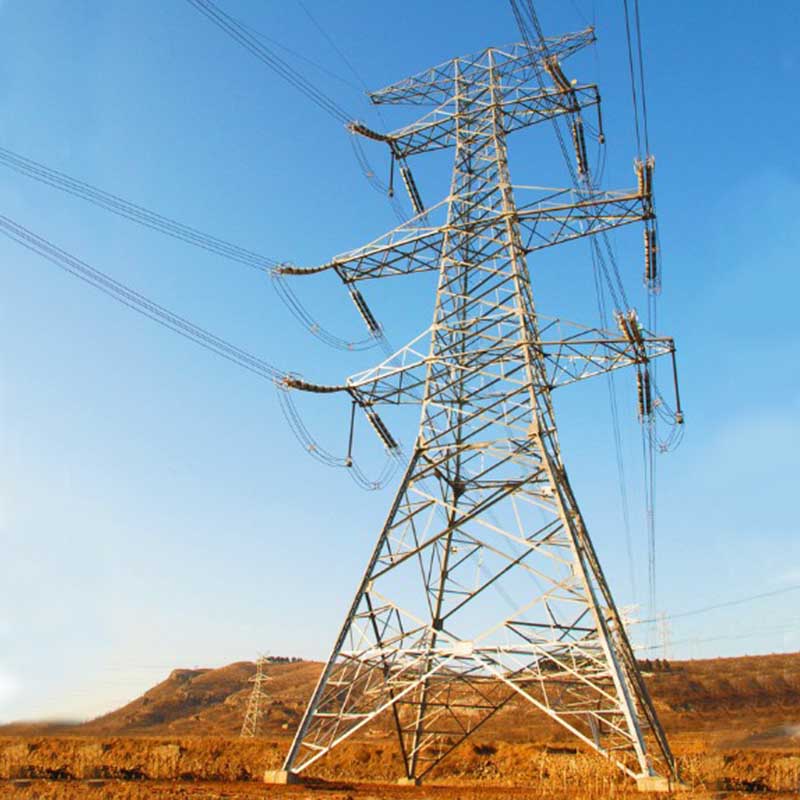Exploring Environmental Considerations of Galvanized Steel Structure Power Towers: Wildlife Impact and Visual Aesthetics
2024-04-10
In the pursuit of efficient and sustainable energy solutions, the construction of power towers utilizing galvanized steel structures has become a common practice. These towering structures play a crucial role in supporting the transmission and distribution of electricity across vast landscapes. However, as with any development, the environmental impact of such infrastructure cannot be overlooked. In this blog, we delve into the environmental considerations associated with the use of galvanized steel structure power towers, particularly focusing on wildlife impact and visual aesthetics.
Galvanized Steel Structure Power Towers: A Brief Overview
Galvanized steel structures are favored for power tower construction due to their durability, strength, and corrosion resistance. These towers serve as the backbone of electrical transmission lines, supporting conductors that carry electricity from power plants to substations and eventually to homes and businesses. Their robust design ensures reliability in withstanding various environmental conditions, including harsh weather and high winds.
Wildlife Impact
One of the primary concerns regarding the environmental impact of power towers is their potential to disrupt wildlife habitats and migration patterns. The presence of tall structures can pose risks to avian species, particularly birds of prey and migratory birds. Collisions with power lines and towers are known causes of bird fatalities, and the electromagnetic fields generated by the lines can interfere with avian navigation systems.
To mitigate these risks, various strategies can be implemented during the planning and design phases of power tower projects. These may include:
1. Avian Flight Diversion: Utilizing specialized marking techniques or incorporating devices such as diverters and perch deterrents to make power lines more visible to birds and discourage perching.
2. Route Planning: Avoiding sensitive wildlife habitats and migration corridors when selecting the routes for power lines and towers.
3. Environmental Assessments: Conducting thorough environmental impact assessments to identify potential risks to wildlife and implementing mitigation measures accordingly.
4. Regular Monitoring: Implementing monitoring programs to assess the effectiveness of mitigation measures and make adjustments as needed.
Visual Aesthetics
In addition to wildlife impact, the visual aesthetics of galvanized steel structure power towers can also be a matter of concern for communities and environmental advocates. The towering structures, with their lattice or monopole designs, can significantly alter the visual landscape, particularly in scenic or natural areas.
Addressing concerns related to visual aesthetics requires a balance between the functional requirements of the power infrastructure and the preservation of visual harmony within the environment. Some approaches to minimize the visual impact of power towers include:
1. Vegetation Screening: Planting trees or vegetation to partially obscure the view of power towers from sensitive viewpoints.
2. Camouflage Techniques: Employing camouflage painting or materials that blend the towers with the surrounding landscape, such as using earth tones or mimicking natural textures.
3. Alternative Designs: Exploring alternative tower designs, such as buried or underground power lines, where feasible, to minimize the visual impact on the landscape.
4. Community Engagement: Engaging with local communities and stakeholders to gather input on the design and placement of power towers, considering their visual preferences and concerns.
Conclusion
While galvanized steel structure power towers are essential for the efficient transmission of electricity, their construction and presence can have notable environmental implications, including impacts on wildlife and visual aesthetics. By incorporating careful planning, assessment, and mitigation measures into power tower projects, it is possible to minimize these environmental concerns and strike a balance between energy infrastructure development and environmental conservation. Collaboration among stakeholders, including government agencies, utilities, environmental organizations, and local communities, is crucial in ensuring that power infrastructure projects are executed responsibly and sustainably, respecting both the needs of human populations and the integrity of natural ecosystems.



